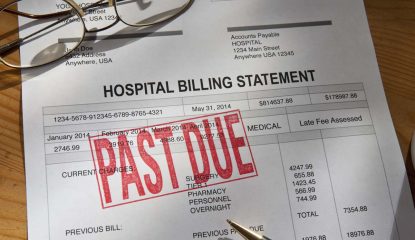Analysis Finds Majority of Medical Debt Held by Insured Americans
By Consumers for Quality Care, on February 7, 2024

A recent analysis conducted by Kodiak Solutions, and reported by The Guardian, finds that the majority of medical debt in the United States is now held by consumers with health insurance.
In just a few years, “bad debt” among insured consumers has risen from 11.1 percent in 2018 to 57.6 percent in 2022.
Bad debt has been a metric used by hospitals to classify bills they believe consumers could pay but choose not to. Colleen Hall, Senior Vice President for Kodiak Solutions, now says that with the rising cost of health care, coupled with stagnant wages, consumers are less able to pay for medical expenses. “We always used to consider bad debt, especially bad debt write-offs from a hospital perspective, those [patients] that have the ability to pay but don’t,” says Hall. “Now, it’s not as if these patients across the board are even able to pay, because [out-of-pocket costs are] such an astronomical amount related to what their general income might be.”
Both insurers and providers have contributed to the medical debt crisis. The study noted that the increased prevalence of both private and public high-deductible health insurance plans has exacerbated the medical debt crisis in the country, where 100 million Americans collectively owe $200 billion in past due medical expenses. Furthermore, hospitals continue to engage in predatory debt collection practices and other anti-consumer behavior, worsening the medical-debt crisis.
Having insurance is not enough. CQC urges lawmakers and insurers to find solutions to deliver affordable health care for Americans and prevent consumers from going into medical debt for seeking the care they need. In addition, hospitals should be part of the solution to America’s medical debt crisis. CQC urges hospitals to better serve their communities and to deliver care for patients when they need it most.




